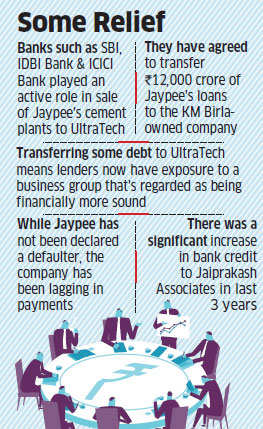1. Keep an eye on the Fed (and other central banks)
A big part of the investing story in 2016 will undoubtedly hinge on how well Yellen manages the U.S.'s transition to normal, non-zero interest rates. If she raises rates too quickly, it could push the still-rickety U.S. economy back toward recession. If she raises rates too slowly, cheap credit could fuel a bubble in asset prices.

In general, higher interest rates mean slower economic growth and thinner profits for U.S. firms, so you'd think that the longer Yellen holds off in raising rates, the better for U.S. stocks.
But Yellen's reluctance to raise rates hasn't always been interpreted as a positive signal by the markets, perhaps because it's seen as evidence that the U.S. is on shakier economic ground than we'd like to think.
In short, the Fed is a wild card this year.
One stable investment is a certificate of deposit. Find the best CD rates.
2. Get ready for some volatility in 2016
On top of that, changes to the federal funds rate have tended to be accompanied by volatility in the markets over the past few decades, so it's shaping up to be a bumpy ride in 2016.
3. Keep enough cash on hand to avoid liquidating assets
With volatility likely to be strong in 2016, it might make sense for those who depend on their portfolio to pay some or all of their living expenses to set aside a larger cash cushion ahead of time. That's so they don't have to sell assets at temporarily depressed prices in order to meet routine or unexpected expenses.
4. Be aware of assets outside of your brokerage account
For instance, say you decide you want exposure to the residential housing market, and you go out and put a sizable chunk of your stock portfolio into the SPDR S&P Homebuilders ETF (XHB). If you're also a homeowner and have a big percentage of your net worth tied up in your home equity, as many homeowners do, your total exposure to residential real estate is your equity, plus whatever percentage of your overall assets are in XHB. At that point, you may be overexposed if the housing market goes sideways again.
The same applies to your human capital -- a complicated-sounding term that means the present value of all your future paychecks put together. For example, if you're a petroleum engineer, your paychecks, and consequently, the value of your human capital, are very much tied up in the fate of the oil industry.
If things go really bad, you could end up seeing your wages stagnate or, worse, you could become unemployed. In that case, it may not be a great idea to have a huge allocation to oil companies in your portfolio on top of that.
A good financial planner would take into account all of your assets, not just the financial ones, and so should you.
5. Make a plan and stick with it
But how do you avoid falling into the buy-high, sell-low trap? Mostly by having -- and sticking with -- a comprehensive investment plan. That plan should have 2 essential parts:
- An investment policy statement, or IPS, that takes into account your particular time horizon, risk tolerance and goals.
- A strategic asset allocation designed to help you reach the goals within the constraints outlined in your IPS.
Stick to your plan through day-to-day fluctuations rather than going on a selling frenzy every time you get uncomfortable. Think of it as a guardrail to keep you between the ditches when market turns get twisty.
6. Dollar-cost averaging can be your friend
But dollar-cost averaging can have benefits from a behavioral finance perspective -- that is, it helps investors not to freak out and sell everything when the blue chips are down.
For example, say you get a $2,000 bonus at work and want to put some money into a tax-advantaged 529 college plan account for your kids' education.
If you put the entire lump sum in right before the market takes a big hit and your brand-new investments lose 10% of their value in a day, you're going to be tempted to sell it all and move into unproductive cash investments.
On the other hand, if you put $200 per month in for 10 months, day-to-day price fluctuations may not have the same emotional impact.
Particularly in a year that's looking to be fairly volatile, that type of strategy might be useful, especially for beginning investors.
7. Watch for bargains
But when you're investing for the long term, bear markets and large-scale drops in asset prices should be looked at the same way you look at a buy-one, get-one-free sale at the supermarket -- as an opportunity to stock up (no pun intended) when prices are low.
There are a few key sectors that look likely to be depressed in 2016, most notably energy, materials and utilities. As long as it fits in with your overall investment plan, taking the opportunity to pick up some of the historically highest-performing companies in those sectors may help boost your returns over the long term.
8. Be skeptical of portfolio-based lending
But there's 1 big reason that portfolio-based loans are usually a bad idea: If the securities decline substantially in value, you could be on the receiving end of a margin call. If that happens, you may either have to put up more collateral or face having the loan come due immediately.
In an environment where security prices could be fluctuating more than in the recent past, that could end badly for investors. If you need cash to make a purchase, a better move might simply be liquidating part of your portfolio and using the proceeds from the sale instead.
9. Take advantage of tax management opportunities
Basically, any investment you own in a taxable account that has gone up in value a lot is a tax bomb waiting to explode and stick you with a bill for up to 20% of the gain, depending on your income.
The 1 thing that can defuse these tax bombs is using losses on investments that didn't work out to offset the gains.
Here's the basic trick: You see that stocks in a particular category are falling across the board because of some broad economic trend. You happen to own a stock in this category that's been a loser compared with its peers for some reason -- its products aren't as good, its management is clueless, whatever. You don't want to own it anymore, but you believe the sector it's in will recover at some point before the end of your time horizon.
But wait! There's another stock in that same category that's consistently beaten your bad stock and looks well-positioned for a comeback. You can sell the bad company's stock, use the proceeds to buy the good stock, and boom, you have a tax loss to offset gains elsewhere in your portfolio, and you haven't violated the wash-sale rule.
Times of elevated volatility, like 2016 is looking to be, are a perfect time to pull off just such a maneuver. So, if you have chronically underperforming investments that you've wanted to unload for a while and have some long-term capital gains issues that need to be addressed, keep tax-loss harvesting in mind.
10. Be aware of the difference between cyclical vs. secular trends
A secular trend is different. It's a longer-term trend in an industry or market brought on by some fundamental change, like the fall of Polaroid as digital cameras gained in popularity or the decline of newspaper stocks as Web-based news consumption became the norm.
Sometimes in the moment, it can be difficult to tell the difference between the 2. For instance, are current low oil prices a cyclical trend that will soon reverse, leading to prices rising to record levels in the future? Or are oil companies looking at more or less permanently slow growth, thanks to gains in renewable technologies and increasing environmental regulation designed to slow global warming?
Will financial stocks recover as they adjust to (and lobby against) new regulations designed to keep them from blowing up the global economy again? Or, are their low stock prices a symptom of disruption by prepaid debit card providers, robo-advisers and other fairly recent "fintech" competitors?
As the pace of technological change accelerates in 2016 and beyond, these types of questions will become even more pressing for investors, increasingly determining which investors win and which ones lose.
Sun Capital










